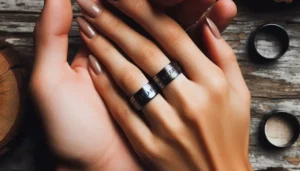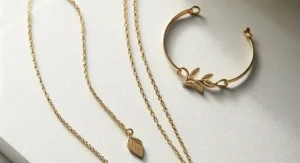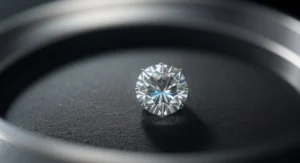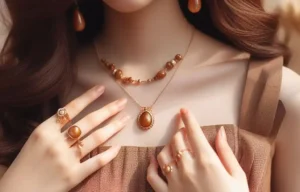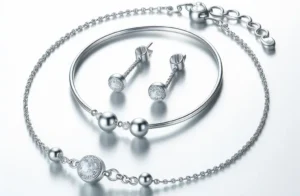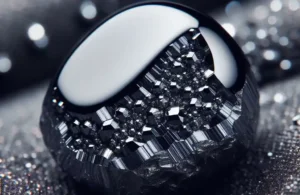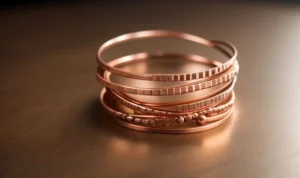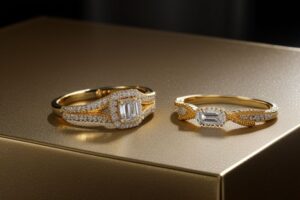Uncovering the truth about whether your agate is real or not requires a combination of observation, knowledge, and sometimes, professional help.
Agate, a beautiful semi-precious stone, has been valued for centuries for its striking patterns and colors. However, with its popularity comes the risk of encountering fake or synthetic agates in the market.
Whether you’re a collector, a jewelry maker, or someone who appreciates the natural beauty of stones, knowing how to identify a real agate is essential. This blog post will guide you through various methods to help you determine the authenticity of agate.
How to Tell if Agate is Real?

To determine if your agate is genuine, consider the following key indicators:
– Inspect for natural imperfections, such as air bubbles or tiny crystal formations, which are common in authentic agate.
– Observe the color distribution within the stone; real agate shows uneven color saturation and areas of varying transparency, unlike synthetic versions that often have overly vibrant and uniform colors.
– Perform the scratch test using a material of known lesser hardness. Genuine agate, with a Mohs hardness of about 7, should not be easily scratched by materials like copper coins or glass.
– Evaluate the stone’s weight and temperature. Agate should feel heavier than it looks and remain cool to the touch longer than synthetic materials.
– Examine the stone under different lighting conditions. Natural sunlight and artificial light can reveal the depth of the agate’s banding and translucency, characteristics less pronounced or absent in fakes.
– Seek professional testing for a conclusive analysis. Gemologists can provide detailed examinations and authenticate the stone using advanced techniques.
Understanding Agate and Its Unique Properties
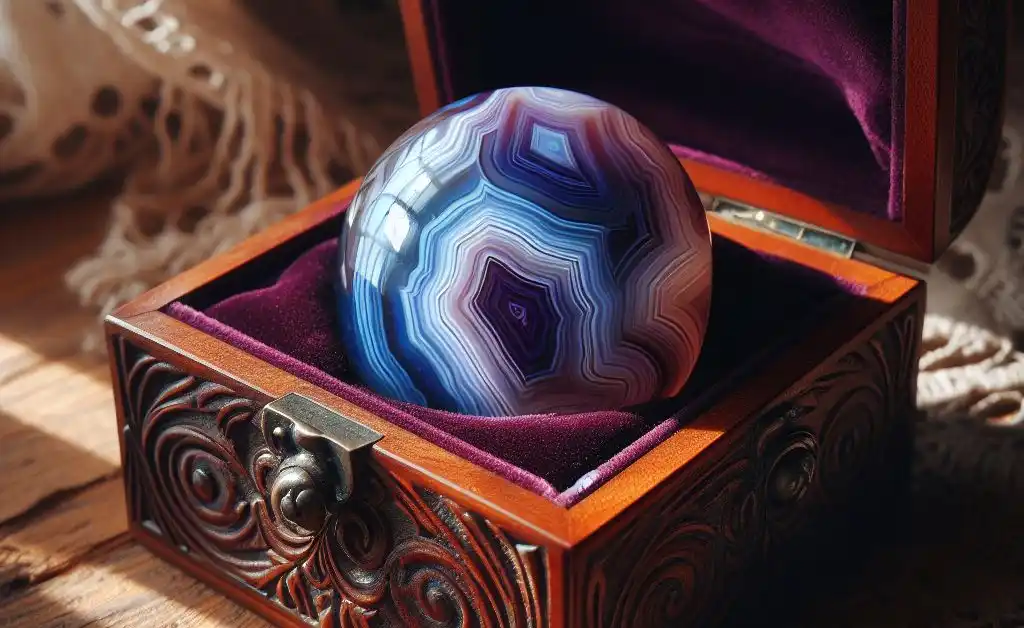
Agate, a distinguished member of the chalcedony family, owes its beauty to the unique conditions under which it forms. This semi-precious stone emerges from the cavities of volcanic and metamorphic rocks, where silica-laden groundwater deposits layer upon layer of material over centuries.
The resulting banding patterns, a signature trait of agate, arise from these successive deposits, showcasing an array of colors and intricacies.
The wide spectrum of colors found in agate, including shades of red, yellow, blue, green, and purple, is largely due to trace minerals within the silica. These minerals provide each piece of agate with its distinctive hue, making every specimen unique. The formation process of agate ensures that no two stones are exactly alike, with each bearing its own story in its bands and colors.
Beyond its visual appeal, agate possesses physical properties that contribute to its desirability and usefulness. With a hardness rating of about 7 on the Mohs scale, agate is notably durable and resistant to scratches, making it an ideal material for jewelry, ornaments, and various art forms. This resilience is complemented by the stone’s naturally glossy finish, which can be enhanced through polishing but is inherently part of its charm.
The process by which agate forms also leads to the occurrence of inclusions and other features within the stone. These can include bands of differing transparency, pockets of crystalline formations, and variations in color saturation. Such characteristics are not only fascinating markers of agate’s natural origin but also aspects that collectors and enthusiasts prize for their contribution to the stone’s beauty and uniqueness.
Understanding these properties of agate enriches the appreciation for each piece, highlighting the natural artistry and geological wonder that define this captivating gemstone.
The Importance of Close Visual Inspection
A thorough visual examination of an agate can uncover subtle yet telling signs of its authenticity. When scrutinizing the stone, focus on the presence of natural imperfections, which are inherent to genuine agate. These can include small crystals or air bubbles, trapped within its layers during formation.
These imperfections serve as a testament to the stone’s natural origin and are often absent in synthetic counterparts. Additionally, genuine agate exhibits a unique color distribution, characterized by uneven saturation and areas of varying transparency.
This natural variation stands in stark contrast to the overly vibrant and uniformly colored patterns seen in counterfeit stones. By carefully observing these details, enthusiasts can gain valuable insights into the stone’s genuineness. Authentic agate’s beauty is enhanced by its natural flaws and color variations, which are key aspects to look for during visual inspection.
Remember, the natural world rarely produces perfection in patterns or color distribution, so these elements are crucial indicators of a genuine agate.
Conducting the Scratch Test: A Simple Method
The scratch test is a practical approach to help verify the authenticity of agate by utilizing its known hardness. Agate, belonging to the quartz family, ranks at about a 7 on the Mohs scale of hardness.
This characteristic implies that agate should effectively scratch softer materials without easily succumbing to scratches from objects of similar or lesser hardness. To carry out this test, locate an inconspicuous area on the stone where a potential scratch would be least noticeable.
Using a material with a known lower hardness, such as a copper coin (which has a Mohs hardness of around 3) or a piece of glass (with a Mohs hardness around 5.5), gently attempt to scratch the surface of the stone. If the item leaves no mark, this indicates the stone’s surface is at least as hard as agate should be, supporting its authenticity.
However, it is essential to approach this method with caution, as excessive force may damage the stone, and it does not conclusively prove the stone’s identity but rather eliminates some forms of imitation.
This test, while simple, should be considered part of a broader strategy for assessing the stone’s authenticity, in combination with visual inspection and other methods described. Remember, the goal is not to mar the beauty of the stone but to ensure its genuineness with minimal impact.
The Weight and Temperature Test: Feeling the Difference
Agate’s physical attributes offer another method for gauging its authenticity, particularly through assessing its weight and temperature. As a silica-based mineral, agate naturally exhibits a certain heft due to its density.
When held, it should feel significantly heavier than it looks, especially when compared to artificial materials such as plastic, which might mimic its appearance but not its mass. This difference in weight is a palpable cue pointing towards the stone’s realness.
In addition to its weight, the temperature characteristics of agate are distinctive. Genuine agate remains cool to the touch for a longer period than most materials. This coolness, a trait shared by authentic stones, is due to agate’s ability to dissipate heat effectively.
When picking up an agate, observe how it feels against your skin. Initially, it should feel colder than the ambient temperature and will gradually warm from the heat of your hand. Unlike natural agate, synthetic replicas often quickly match your body temperature, lacking the cool, enduring touch of the real stone.
This tactile examination, focusing on weight and temperature, serves as a straightforward yet telling investigation into a stone’s authenticity. Experience with handling agate will refine your ability to distinguish these subtle yet significant differences, enhancing your confidence in identifying genuine specimens.
Examining Under Light: Revealing Secrets
Illuminating your agate under various light sources can unearth critical details about its authenticity. Natural sunlight is an excellent tool for this purpose, as it can accentuate the stone’s inherent translucency and the depth of its unique banding. Holding the agate up to sunlight or shining a strong lamp directly on it should make these features more pronounced.
Authentic agate will reveal a captivating play of light within its layers, showcasing the subtle gradations and sometimes surprising contrasts in color that occur naturally. This effect, often missed under normal lighting conditions, is a testament to the stone’s genuine nature.
Artificial lighting, such as a powerful LED lamp, can also be beneficial for closer inspection. It allows for a detailed examination of the stone’s internal characteristics, including any mineral inclusions or the presence of tiny air bubbles. These features, indicative of a natural formation process, might not be visible to the naked eye but become apparent under enhanced lighting.
Another aspect to observe under intensified light is the stone’s edge. The edges of real agate, when backlit, should display a degree of transparency, allowing light to filter through and illuminate the stone’s interior intricacies. This contrasts sharply with synthetic imitations, which may either block light entirely or distribute it too evenly, lacking the natural agate’s mesmerizing light play.
Through these observations, light not only becomes a tool for revealing the hidden beauty of agate but also serves as a means to discern its authenticity. Careful examination under varied lighting conditions can unlock the secrets held within the stone, offering clear signs of its true nature.
Professional Testing: When to Seek Expertise
For enthusiasts who have explored all the self-assessment methods yet still harbor doubts about their agate’s authenticity, professional evaluation stands as a definitive next step. Specialists such as gemologists possess sophisticated equipment and a depth of knowledge that goes beyond the reach of amateur testing.
These experts can perform advanced tests, including but not limited to, spectroscopic analysis and microscopic examinations, which can accurately identify the chemical and structural composition of the stone, confirming its natural or synthetic origin.
Visiting a certified laboratory or a reputable jeweler equipped to conduct these analyses may involve a fee, but it ensures a level of certainty that self-testing methods cannot provide. Professionals can also offer valuable insights into the stone’s quality, potential value, and even its provenance, information that can be particularly useful for collectors or those considering the stone for jewelry purposes.
It’s important to choose a trusted and experienced professional for this task, as their expertise can be the deciding factor in determining the true nature of your agate. Additionally, receiving a certificate of authenticity from a recognized authority can add to the stone’s value and your confidence in its genuineness.
Engaging with a professional not only secures peace of mind but enriches your understanding and appreciation of your agate, whether it becomes a cherished part of a collection, a personal keepsake, or a beautiful addition to a jewelry piece.



